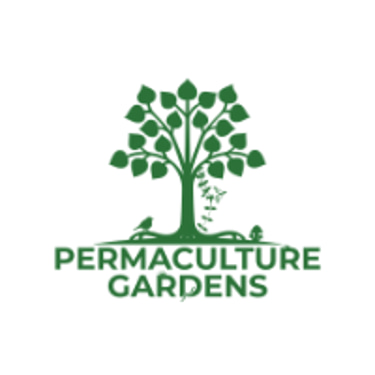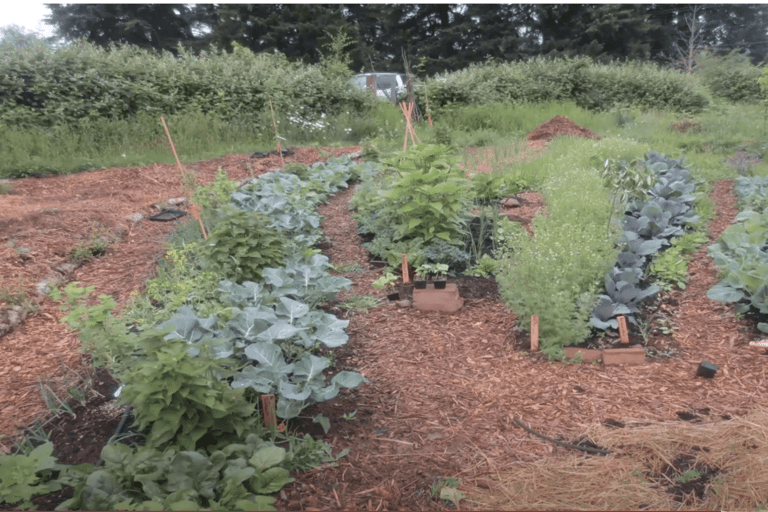Permaculture Guilds
What is a Permaculture Guild and how exactly do you build one? Read this article for guild examples and build one yourself!
9/18/202312 min read
Permaculture Guilds:
Examples, How-Tos, and a Step-by-Step Guide
Disclaimer
This Permaculture Guild article may contain some affiliate links. The small commission we receive if you choose to purchase goes towards making this gardening education available for free! We do not affiliate for anything we do not personally use. Thanks so much for your support!
Building a Permaculture Guild using our SAGE app

Permaculture Guilds
An Introduction
The concept of permaculture guilds involves having some background knowledge about permaculture as well as familiarity with the plant and animal world. The process outlined below is by no means complete but rather meant to help you get out of analysis paralysis and actually start building a guild instead of thinking that it’s too complicated.
1. What is a Permaculture Guild?
An example of permaculture guilds designed at Beacon Food Forest, an urban food forest in Seattle, Washington
A Brief Definition
In permaculture, we call a collection of plants that work well together and support each other's growth a "Permaculture Guild." You can call it other things like:
A Polyculture
A Plant Grouping
Companion Planting
A guild's collection of plants works together to benefit the whole, and they especially support the growth of a "star player" (usually, a perennial. But not always).
Think of a guild like the players in an orchestra creating a symphony!
What is a Permaculture Guild Made of?
A permaculture guild is made of many elements. Each element
should provide at least three functions to your system.
Think of how in nature a specific medicinal plant like chamomile
serves not only as a thing of beauty, a pollinator, and an
aromatic pest deterrent but also aids in soil regeneration and
serves as a medicinal herb to calm the nerves and helps one
go to sleep. That's at least six functions from one plant!
When choosing the players of your guild, make sure that they
are multi-faceted
Beneficial Plants
Beneficial Animals
Soil Microorganisms
intentionally designed to create a multi-functional, ecologically sound system.

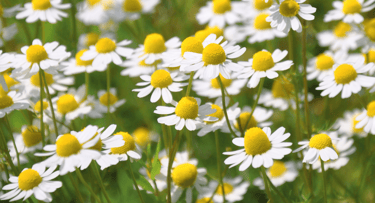
Chamomile
Why Build a Permaculture Guild?
At first, It may seem efficient to plant a monoculture of crops when you have a factory model of production in mind. However, the problem with that model is that agriculture deals with living things that are not machines.
Living things cannot reach their fullest potential in a system that treats them as objects.


A monoculture planting vs. a polyculture planting
Before we jump into building our guilds, let's examine why we need to go through the trouble of building one in the first place.
Why not plant rows and rows of corn or soybeans like commercial growers do? Isn't that the more efficient way to do agriculture?
Our first goal is the same as that of the conventional agricultural model: maximum output of food.
Our second goal is efficiency. We want to use the least amount of input for the most amount of gain.
Our third goal looks to the future. As we carry out our first and second goals, we care for the ecology we work with for the generations to come. In this way, we can continue to have resources in the future to perpetuate this spiral of growth.

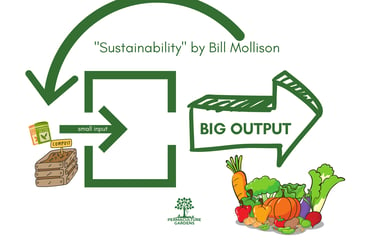
As Bill Mollison once said,
"Sustainability is when your output exceeds your input."
And the Results?
As a result of building permaculture guilds, our yields turn out to be far greater and far more diverse than simply food.
Our yields include:
Clothing
Material for shelter
Food for people, plants, and animals
Medicine
Peace of mind
Areas to meditate in
Pollinator and wildlife habitats
Stabilized climates
Ecosystem rehabilitation
The passing on of knowledge to the next generation and so much more.


We build something bigger and better than our wildest dreams.
We become "lazy gardeners."
This is why, permaculture guilds are better than monoculture plantings.
Guilds are the “perma” in permaculture.
Bill Mollison would say permaculture was building "permanent systems for persistent human existence."
An example of permaculture guilds in Sherret Food Forest, a permaculture property in Portland, Oregon
Three Considerations in Guild Building
2. How to Build a Permaculture Guild
Now that you know why you need to build a permaculture guild, let's design a guild step-by-step. There are three things to consider when building a guild:
Niches in Time: Knowing the seasonality of your plants
Niches in Space: Knowing how to use the horizontal and vertical spacing of your plants to create optimal growth and maximum harvest
Niches in Functional: Knowing the beneficial relationships between plants you are grouping together
Ecosystem Diversity - Knowing to select for diversity and even redundancy in your system.
1. Filling Niches in Time
Unlike architectural design or engineering. Permaculture
design deals with elements that grow and change over time.
Some plants are available to us only during the summer. These
are often our favorite backyard vegetables such as tomatoes,
peppers, cucumbers, squashes.
Some plants thrive during the cooler seasons, such as kale, winter radish, and lettuce. Most of these flag during the summer months or cannot be grown in certain parts of the world where there is no cool season.
And some plants thrive in the in-between seasons, such as peas, chamomile and yarrow which bloom in the early spring but fry in the early summer.
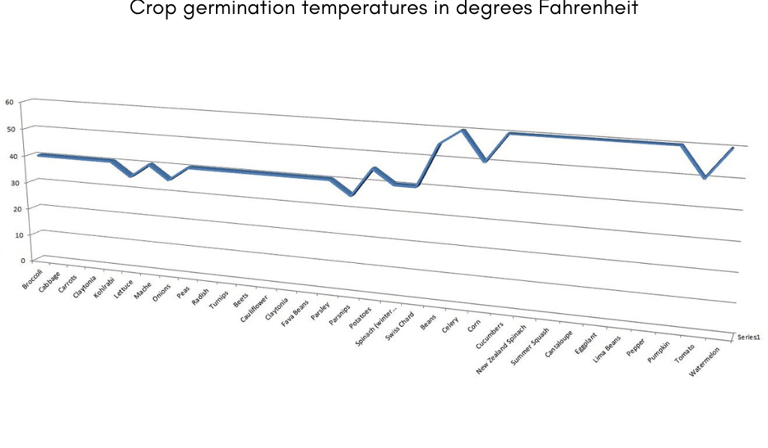

A graph showing the seasonality of crops
2. Filling Niches in Space
To maximize our yields, it's important to fill in as many niches in our given space as we can.
Our spaces may seem to have many gaps at the beginning of the growing season. These gaps will fill out as our plants grow and the more we incorporate perennial plants into our design.
When we think of space, we have to consider not only the spaces aboveground but also those belowground.

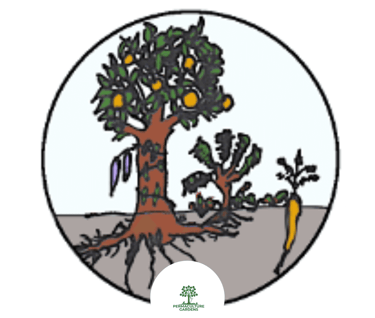

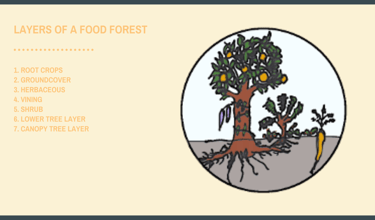
7 Layers of a Food Forest
Aboveground Niches:
The Seven Layers of a Food Forest
What are the Seven Layers of a Food Forest?
The Seven Layers of a Food Forest are the physical niches in
3-dimensional space that we try to optimize to grow the most
amount of food in the least amount of land.
We might get into the habit of only thinking of our gardens in
2-dimensions and forget the growth habits of root crops that
occupy more of the underground layer or the vining habits of
plants that could give us more fruit if trellised.
Are there only seven layers in a Food Forest?
Certainly not. You can have fewer layers if you live in a tiny apartment or more on a farm. But let’s start with seven because that is how this concept of niches in space found its way into permaculture.
Here are the layers:
Overstory Layer
Vining Layer
Ground Cover
Understory Layer
Shrub Layer
Herbaceous Layer
Root Crop Layer
Find a great example of this on our blog, "Shade Gardens."
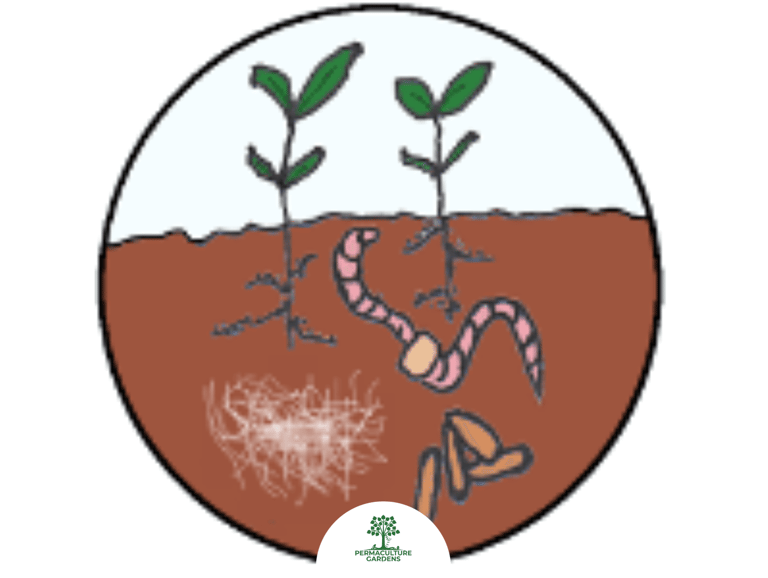

Remember to support the life in the ecosystem belowground
Belowground Niches:
The Soil Food Web
What is the Soil Food Web?
The Soil Food Web was popularized by soil scientist, Dr. Elaine Ingham.
It is the understanding that there is an ecosystem belowground that
supports the ecosystem aboveground.
When designing your permaculture guild, make sure that you are
growing plants that will regenerate the soil. Here are some ways
that plants help support and fill in the Belowground niches so that they are teaming with life
Plant perennials - Perennials provide steady food and often create symbiotic relationships with the microorganisms in the soil. Because they are not likely to be pulled out anytime soon, these plants support the life in the root zone layers (also known as the rhizophagy) for a longer period than annuals would.
Plant legumes - Legumes have a symbiotic relationship with rhizobia and Frankia bacteria that fix atmospheric nitrogen to nitrates that the plant can uptake. No matter how much Nitrogen we add to the soil using our favorite store-bought brand, this will not help the plant if there are no beneficial microbes to "digest" the N2 so that the plant can "eat" it.
Plant living mulch, do not leave soil bare - Water is essential for the life in the soil to flourish and a living mulch keeps the soil moist.
2.5. Filling Niches in Time and Space
For the next consideration in building guilds, we combine both time and space and take note of the "crown diameters" of the plants, trees, or elements in your design that are bound to change.
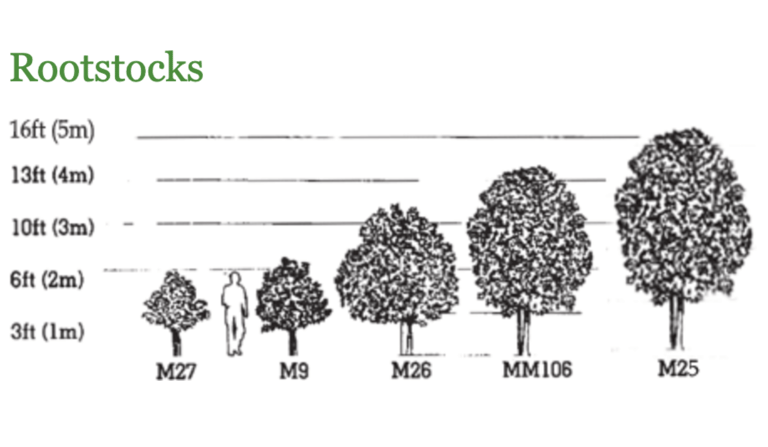

Questions to ask of each design element
What is the crown diameter of your tree?
Is your tree a dwarf or full-sized variety?
What is the growth habit of your particular plant?
Will it shade out the plants underneath it?
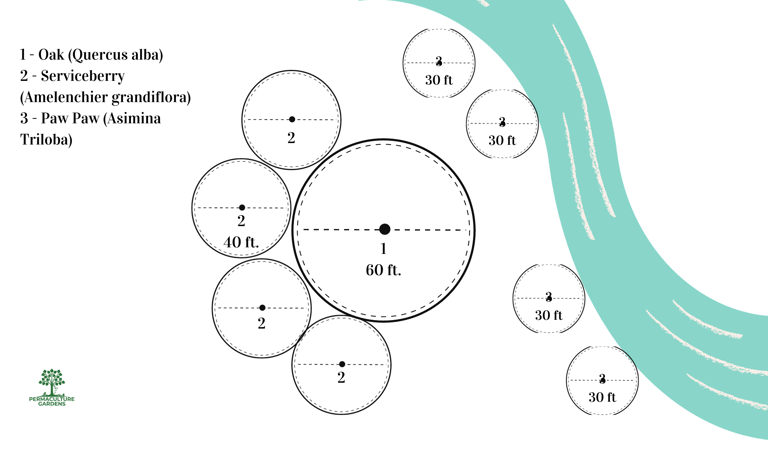

Crown diameter of trees
3. Fulfill Beneficial Functions
Some Permaculture Functions to Look For
If we were to list all the functions that a plant provides, we may never get done designing. So we are going to highlight certain functions that we look out for initially when designing a guild. Some functions may be relevant to only you, as for instance, "This rose functions as a reminder of my grandmother." That is a legitimate function! But Bill Mollison (the co-coiner of the term permaculture) suggests that we have at least 3 functions per element when we design. So here are the few that are good to have in any guild:
Nitrogen Fixers - These plants enrich the soil by converting atmospheric nitrogen into a form that other plants can absorb, reducing the need for synthetic fertilizers.
Examples: Peas, beans, clover, lupines.
Dynamic Accumulators - These deep-rooted plants bring up nutrients from deeper soil layers to the surface, where they become accessible to other plants when the leaves decompose.
Examples: Comfrey, dandelion, chicory.
Pollinator Attractors - These plants attract bees, butterflies, and other pollinators, ensuring pollination for fruits and seeds.
Examples: Lavender, borage, calendula
Pest Repellents - By emitting scents or chemicals, these plants repel harmful insects, protecting the guild from pests.
Examples: Marigolds, garlic, basil
Ground Covers - These plants cover the soil, reducing weed growth, retaining moisture, and preventing erosion.
Examples: Clover, creeping thyme, sweet alyssum
Wildlife Supporters - Plants that provide food or habitat for beneficial wildlife, aiding in pest control and pollination.
Examples: Elderberry, sunflower, and berry bushes
Mulchers - Plants that generate a lot of biomass, which can be used as mulch to enrich the soil with organic matter.
Examples: Comfrey (for its biomass), cardoon, and artichoke leaves
Edible and Medicinal
Plants that provide direct benefits to humans, offering food, medicine, or other useful products.
Examples: Most vegetables and herbs, and many medicinal plants.

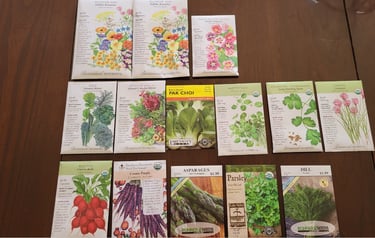
A selection for an asparagus guild
3.5 Fulfill Ecosystem Diversity
The more diverse your garden, the more stable it becomes.
Indeed, the diversity of plants is one of the hallmarks of a
permaculture guild. Diversity ensures that if one type of crop
dies, another one might survive.
Diversity also attracts different animals into the mix. Animals
that could contribute to soil fertilization, pollination, and
increased vigor in plant growth.
Diversity means "more hands make light work" so instead of
doing all the garden work ourselves we are outsourcing it to the ones who do this work full-time.
Doesn't diversity make the garden messy looking?
While this permaculture principle can sometimes clash with the aesthetics of a garden, it is still possible to design a diverse planting of 7-9 crops in a garden bed and place them in a repetitive pattern so that they make a beautiful planting. Think of a cottage garden style, more than a minimalist one.


Diversely planted permaculture guild
Build-A-Guild Steps
Finally, here are the steps you need to take to "Build A Permaculture Guild!"
Designate a Space.
If you're new to building permaculture guilds, start with no more than a 20 ft x 20 ft square.Choose a "Star Player."
A guild is typically centered around a "Star Player." A Star Player is a desirable plant that you really want to get a yield from. Usually, this is a perennial, say, for instance, an apple tree.Choose Your Supporting Players According to Their Function.
What functions are necessary to create ecological design? What functions support the surrounding plants and animals that are affected by your guild?
Unlike in monoculture, each element of your guild should provide three or more functions
Here are but a few examples of functions that permaculturists use when creating guilds. There are many more!
Functions of "Supporting Players"Food, medicine, or fiber resource
Dynamic Accumulator - mines the soil for minerals that it brings up to its leaves and sheds to feed the soil
Nitrogen-Fixer - plants that have bacterial associations that promote plant absorption of Nitrogen in the rhyzophagy
Pest Deterrent
Pollinator Attractant / Native Plant
Weed Suppressant
Wildlife Habitat
Fill in the Seven Layers of a Food Forest.
Using our SAGE app or this workbook, fill in the layers of a Food Forest.
What layers can you use in your space?
What plants will max out those layers so that they maximize food production?
How do I know how to space my plants?
Many times, the spacing requirements on the seed packets are more suited for large agricultural farms. Our permaculture garden app called SAGE makes backyard garden recommendations for the appropriate spacing of many of the common fruit and vegetable plants.
Test drive it for free HERE!Ensure Diversity and Know Your Plant Families:
There are about 9 common plant families that North American vegetable gardeners tend to grow.
Know which family your crops belong to and make sure you are not creating a monoculture by planting the same family all in one bed.Draw Your Guild
Using the SAGE Designer or graph paper on the workbook, draw out your guild using a top view first. This allows you to account for the crown diameters of your plants.
Follow this drawing with a side-view to help you see the height of your plants.
How to Draw Your Guild (especially if you don’t know where to begin)Draw out your permaculture guild area measured to scale.
Select a Star Player you want to grow or from among the plants in the “Perennials” pages
Start filling in your Data Table in the Workbook and identify 7-9 plants that you would like to put into a 20 sq. ft area to support your “Star Player.”
Draw the Top View First: Use the grid paper to draw the maximum diameters of your plants and arrange them according to desirable spacings around the star player
Draw the Sideview next as best you can.
Try it out in your garden and see if it works!
The following are a few examples of permaculture guilds. As Bill Mollison said in his book "Permaculture: A Designer's Manual,"
"The only limit on the number of uses of a resource, possible within a system, is in the limit of the information and the imagination of the designer.
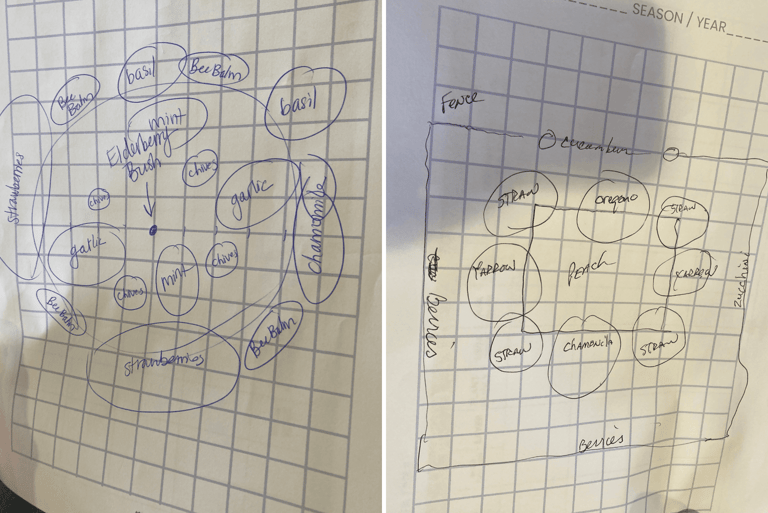

Elderberry & Peach Guilds drawn at a "Build a Permaculture Guild" workshop at the Mother Earth News Fair - Wisconsin
Classic Apple Guild
3. Permaculture Guild Examples
Star Player: Dwarf Apple Tree
Supporting Players:
Bee Balm - insect repeller and pollinator attractant
Chives - weed suppressant
Comfrey - mulch and dynamic accumulator
Daffodil - weed suppressant
Vetch - nitrogen fixer
Star Player: Tomato
Supporting Players:
Borage - mulch & dynamic accumulator
Carrots - weed suppressant
Tulsi - insect repeller and pollinator attractant
Climbing Bean - nitrogen-fixer
Raised Bed Guild
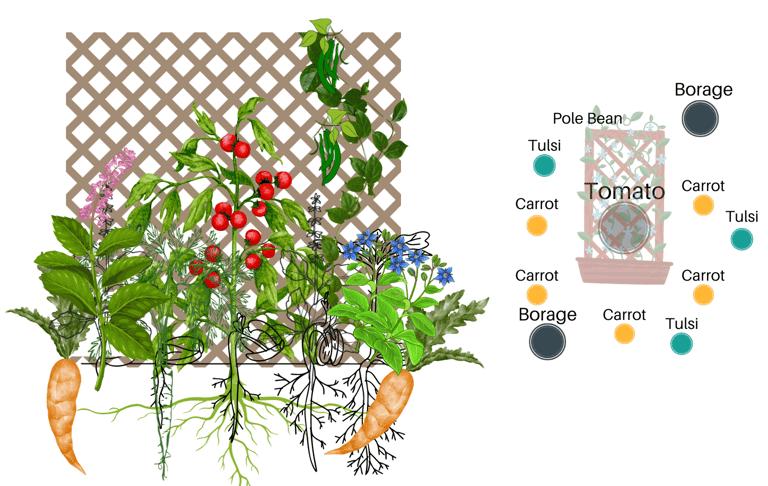

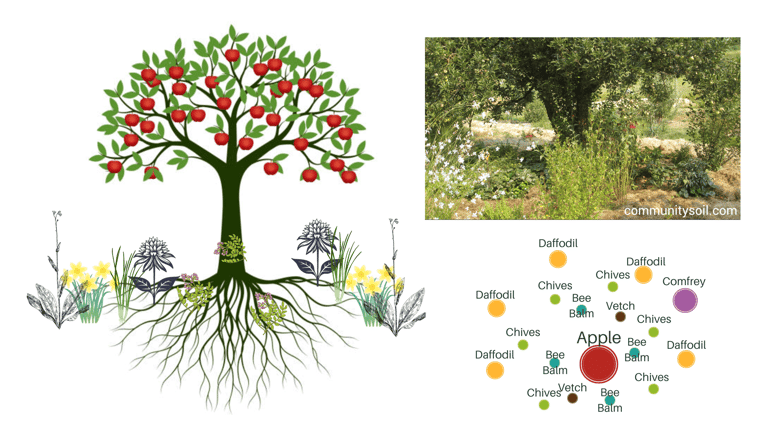

Banana Circle Guild
Star Players: Bananas
Supporting Players:
Papaya trees - diversity of fruit with similar growing
requirements as banana
Papayas - weed suppressant
Sweet potatoes - cover crops, weed suppressor & food
Comfrey and herbs - various other beneficial functions



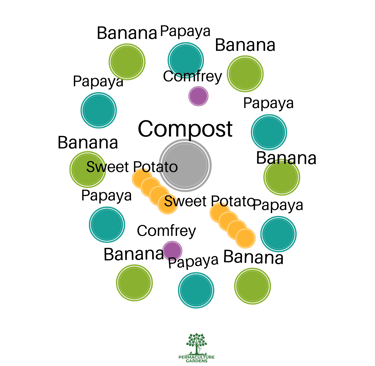


We recommend Integrated Forest Gardening - by Wayne Weiseman, Daniel Halsey & Bryce Ruddock (Chelsea Green)
Want more examples of permaculture guilds?
Want a list of different guild elements to choose from and their functions?
We recommend Edible Forest Gardens - by David Jacke and Eric Toensmeier
Join a Build-A-Guild workshop (included in a GIY membership)
You can find our Build-A-Guild workbook HERE.
Want AI to generate a guild for you?
Dig Deeper
Want a workbook for this?
Register for our live workshop HERE.


Our SAGE garden planning app allows you to plan & design your food garden so you don’t waste hours wondering what to plant and when to plant it!
"AI, make a permaculture guild for my cherry tree."
We've got something better than hit-or-miss Chat GPT recommendations. We have an app to help you figure out what to grow with your cherry, and much more!
It's called SAGE: a permaculture garden design app.
I WANT TO GROW MORE
Sign Up for a
Permaculture Garden Course
I AM A BEGINNER
I WANT MY DREAM GARDEN
Sign up for the
Grow-It-Yourself Program
Everything you need to start a garden
may be hidden in your pantry.
Take a self-paced, step-by-step garden course to help you grow right from seed to harvest.
Make Your Organic Food Garden A Reality with
a garden mentor
a community
an app &
a proven plan!



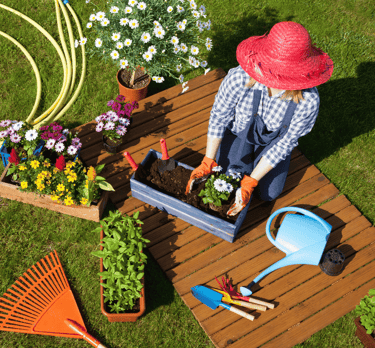


Choose one next step.
Which of the following are you?
Permaculture Gardens - your online resource for organic & sustainable gardens.
Contact
permaculturegardens@gmail.com
Bethany Farm
41558 Stumptown Rd.,
Leesburg, VA 20176
